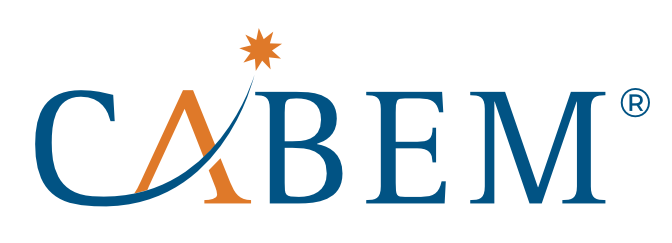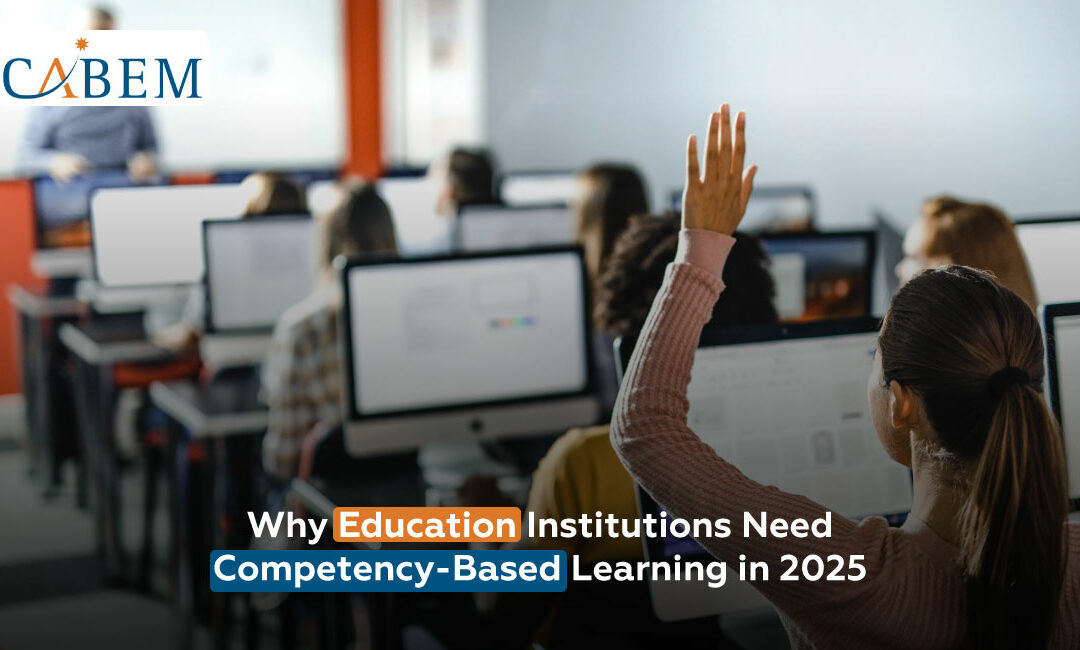The education system is changing rapidly. As technology alters industries and workforce requirements, conventional learning methods cannot keep up.
Today, students require not only memorizing abilities and traditional assessments in the form of tests but also need to acquire skills and competence that enable them to solve real-life problems. Competency-Based Learning (CBL) offers a unique learning approach centered on mastery, customization, and tangible outcomes.
CABEM knows the problems educational institutions face, the necessity of integrating learning models with students, and the workforce demand. This article seeks to uncover why educational institutions will require competency-based learning in 2025, the opportunities that come with it, and how CABEM’s solutions can enable them to succeed.
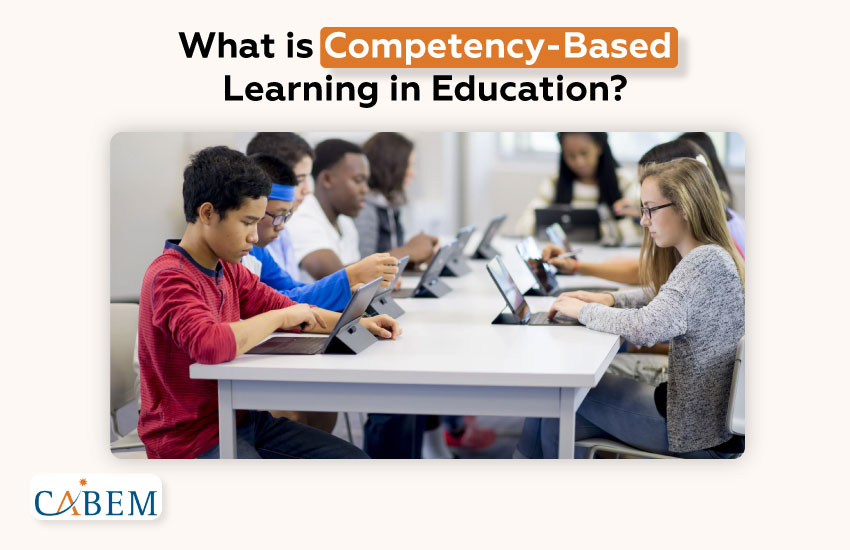
What is Competency-Based Learning in Education?
Competency-based learning (CBL) is a student exposure model that involves learning by developing mastery over acquirable competencies. Unlike traditional learning approaches, which concentrate on credit hours or courses to be covered, CBL involves students progressing at their own pace and proving competency before they are allowed to proceed to the next level of learning.
In CBL, learning paths are individualized, and the tests are adaptable. As a result, students progress at their own pace and within their limits. This model is real-life-oriented and assists students in correlating their learning with real-life situations.
Following are some of the key features of competency-based learning, includes:
- Mastery over time: Promotion occurs based on competency, not how many hours they spend in a classroom.
- Flexible pathways: Learning plans adapt to each student’s pace and goals.
- Skill application: Real-world projects and assessments serve to ensure realistic readiness.
This approach ensures that students are well prepared for the challenges of a competitive society in a constantly evolving world.
For more information on how learning management systems can be implemented in competency-based education, read our blog post titled 6 Key Benefits of Competency-Based Learning Management Systems. See how technology solutions can improve participation, effectively deliver knowledge, and create value.
Challenges Faced by Education Institutions Without LMS
Educational institutions encounter various challenges because the current advanced learning management system (LMS) does not enhance competency-based learning. The traditional approach to teaching and learning in classrooms does not sufficiently meet students’ needs, creating inefficiencies and gaps.
1. Inability to Address Skill Gaps
Traditional education systems do not give enough attention to individual strengths and weaknesses within set assessment frameworks and time constraints. This leads to:
- Advancing without mastery: The main issue here is that students progress to another academic level without understanding the fundamentals, resulting in gaps in their learning.
- Missed chances for intervention: Without pointing to areas that need improvement, ways to enhance the needed support are missed.
- Workforce unpreparedness: Graduates are often unprepared for the job market and do not possess the crucial skills that employers expect.
2. Limited Student Engagement
A forced and non-individualized approach frequently leads to most learners being unable to understand the connection of learning to real life. Key issues include:
- One-size-fits-all teaching approaches: Traditional approaches do not consider each student’s different learning styles and requirements.
- Disconnect from real-world relevance: The academic context is of limited or no use in real life, so students hardly find the relevance of learning it.
- Decreased student engagement: The absence of personalized and relevant content decreases the engagement level and general students’ dissatisfaction with the learning process.
3. Lack of Measurable Outcomes
In the traditional education approach, student progress is defined based on academic grades or the time spent in the class without indicating real learning. This results in:
- Inadequate insight into student capabilities: Traditional models are not helpful enough in depicting the full spectrum of students’ abilities.
- Misalignment with career expectations: There is often a mismatch between the level of education people attain and the actual skills sought in the workforce.
- Barriers to accreditation and reporting: The lack of student performance data makes managing compliance and accreditation requirements challenging.
4. Resource Inefficiencies
Programs consume a lot of resources to effectively address the student’s needs without a centralized system in place. Institutions face:
- Manual tracking challenges: When students’ performance is monitored slowly and manually, administrators have enormous burdens in their work.
- Resource wastage: Co-occurring activity takes extensive time and resources, while professionals can invest this time in developing education quality.
- Scaling limitations: Personalized learning programs cannot be easily scaled up without the help of modern tools and technologies.
- According to the United Nations Children’s, before the COVID-19 outbreak, an astonishing 57% of children in low and middle-income countries could not read and comprehend simple text by age 10. This rate has deteriorated due to the pandemic; a global learning crisis is evidenced by the fact that it has reached 70%. (World Bank Blogs)
5. Difficulty Preparing Students for the Future
The trends in the demand for the workforce are constantly evolving, and that is where conventional learning paradigms fail to prepare students for the future.
- Outdated curricula: Traditional programs also come with significant drawbacks, as many strive to develop theoretical knowledge rather than practical abilities that will be useful in the modern world.
- Lack of adaptability: Linear time and structural arrangements do not help them adapt to the constant change and complexity of today’s working environment.
- Limited focus on soft skills: Conventional learning systems have failed to offer qualities such as communication skills, teamwork, and the ability to solve problems in the workplace.
- Missed opportunities for technology integration: Students’ inability to adopt new technologies means they may not know how to work effectively in a digital environment in their future profession.
- Insufficient career readiness: Conventional models hardly ever match the nature of skills and competencies desired by employers, and hence, graduates are not ready to take on the tasks after completing their studies.
Read on to learn how a large university can reduce complexity and increase efficiency when generating CEU transcripts using CABEM’s Competency Manager. Our case study, “Large University Leverages Competency Manager for CEU Transcript Generation,” examines their issues, and how our solution helped them achieve desired outcomes.
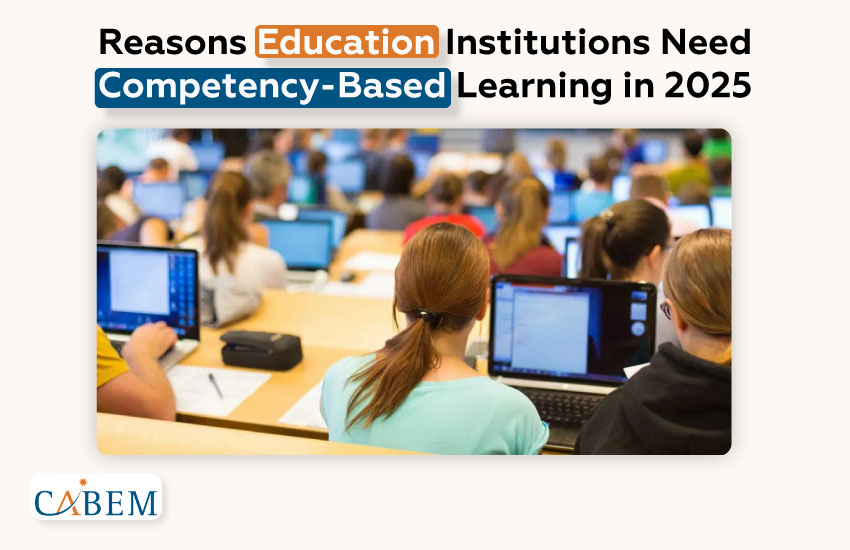
5 Reasons Education Institutions Need Competency-Based Learning in 2025
It is imperative to clarify that competency-based learning adoption is not just a trend but a reality that must be embraced. The following are five persuasive arguments why educational institutions should incorporate CBL in 2025.
1. Addresses Skill Gaps
Competency-based learning ensures that students accomplish certain course levels before proceeding to the next one. By identifying gaps early enough, educators can ensure they support the students in building targeted capacity.
- Targeted support bridges skill gaps: Specific methods in the classroom help focus on each learner’s area of difficulty.
- Confidence grows through mastery: The complete understanding of the competencies leads to the establishment of self-confidence among students.
- Workforce readiness improves: Graduates are equipped better for real professional challenges in their working environment.
2. Encourages Student-Centered Learning
CBL minimizes direct instruction and training of students and instead assigns learning responsibility to them.
- Personalized learning paths: Customized learning programs for every learner based on learning abilities and individual needs.
- Self-paced progress: Allow students to learn at their own pace as well as within their understanding level.
- Skill-building focus: Developing essential facets such as self-orientation, responsibility, or the ability to study independently.
- The eLearning market is expected to reach more than $375 billion by 2026, proving that online learning solutions are gaining more popularity worldwide. (Research)
3. Provides Measurable Outcomes
As opposed to traditional models, CBL admits students’ performance to immediately give straightforward directions for their success.
- Clear learning goals: Competency frameworks set tangible goals that relate well to students’ success.
- Detailed progress insights: Assessments based on data allow for the thorough monitoring of performance indicators and outcomes.
- Accountability made easy: It also helps institutions show results and depict their value to stakeholders.
4. Improves Student Engagement
CBL makes education more relevant and engaging since it links what students are learning with real-world problems.
- Real-world projects connect learning to purpose: Real-life examples help learners realize the applicability of what they are being taught.
- Flexible learning paths enhance satisfaction: An adaptable approach helps to minimize stress and provides an environment for well-being.
- Goal-oriented progress builds motivation: If students can see how they will attain their goals or meet specific objectives, they will remain focused.
5. Prepares Students for Future Careers
CBL prepares students to face challenges in a dynamic workplace environment.
- Competency-driven learning builds career readiness: It requires students to develop specific skills necessary for their achievements in their chosen disciplines.
- Real-world assessments prepare students for workplace demands: Practical assessments expose students to realistic problem-solving tasks based on what may be encountered in the working environment.
- Graduates gain a competitive advantage: With practical experience and skills, learners appear competitive in the job market.
- Currently, 77% of organizations in the United States use eLearning for professional development, which amplifies the impact of digital learning platforms in the education and business worlds. (Research)
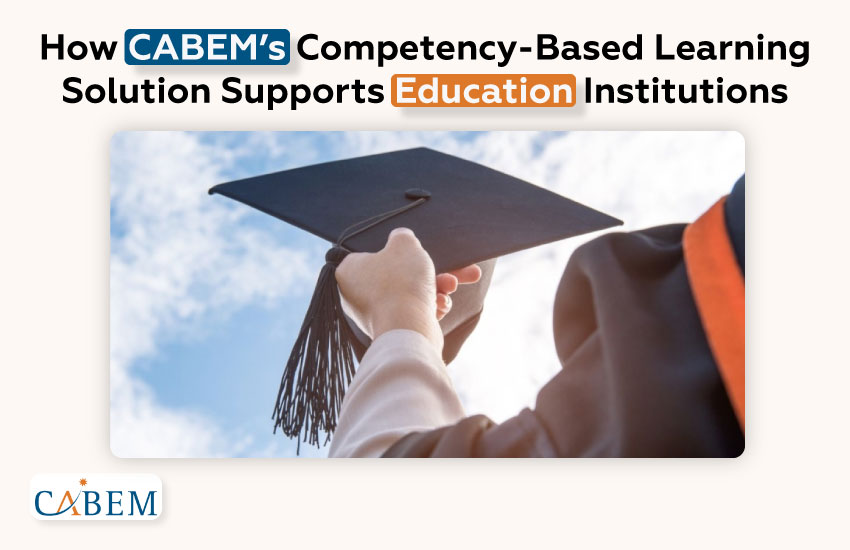
How CABEM’s Competency-Based Learning Solution Supports Education Institutions
CABEM provides a reliable Competency-Based Learning Management System that can help meet the challenges of modern education institutions. It allows the educator to facilitate an engaging, adaptable, and efficient learning space and process.
Key Features of CABEM’s CBL Solution
Here are some key features of CABEM’s CBL Solution to help you take the right step;
1. Centralized Competency Tracking
Institutions can develop and monitor competency frameworks through our platform across all their students.
- Tailored competency frameworks: Program-specific design frameworks to meet specific goals in your program.
- Real-time progress monitoring: Ensure the students ‘competency profile records are current.
- Automated notifications: Get notifications when encouragement or assistance is required.
2. Personalized Learning Pathways
CABEM includes personalized learning plans, which allow students to progress through the course at their own pace.
- Customizable course pathways: Modify learning plans for each learner to cover individual students’ learning rates and needs.
- Hands-on projects: Use real-life examples to assist children in applying their knowledge in everyday environments.
- Self-assessment and collaboration tools: Teach students to monitor their performance and promote practical peer assessment.
3. Comprehensive Reporting and Analytics
CABEM makes it easier for institutions to use reports for decision-making purposes.
- Comprehensive progress tracking: Produce comprehensive progress reports for students and teachers to explain accomplishments and progress.
- Actionable program insights: Ensure that program outcomes and student achievement are well understood for improvement.
- Streamlined compliance reporting: Save time on paperwork using automated tools that meet accreditation and regulatory needs without errors.
4. Seamless Integration with Existing Systems
Our platform can easily be integrated with other tools as it does not disrupt existing processes or workflows.
- Seamlessly integrates with existing LMS and administrative tools: Ensuring it can integrate well with the existing systems without a hitch.
- Scalable for institutions of any size: Quite versatile to serve the purpose of small schools or countless universities.
- Designed with user-friendly interfaces: Designed to be an easy-to-use interface for both teachers and admins, thus making the flow easy.
5. Enhanced Student Engagement
CABEM’s solutions enable a stimulating, student-friendly learning atmosphere.
- Digital portfolios and surveys: Allow children to present their learning developments and monitor progress and achievements joyfully.
- Collaboration tools: Encourage participation in interactive tasks such as collaborating with fellow students and group assignments.
- Gamification elements: Increase learner motivation and participation by making learning enjoyable and goal-oriented.
FAQs
Is competency-based learning suitable for both K-12 and higher education institutions?
Yes! Competency-based learning is flexible and can be used in K-12 and postsecondary education systems. It provides individual approaches to learning while focusing on enhancing basic and advanced skills among students of all age groups.
Does competency-based learning improve academic performance or just practical skills?
Since competency-based learning focuses on both knowledge and skills, it can significantly improve performance. It is effective because it requires mastery and application of course content. This enables students to better understand what is taught in class and, at the same time, provides them with skills that will help them in their careers.
Is CABEM’s Competency-Based Learning (LMS) suitable for large-scale institutions?
Absolutely. CABEM LMS has been developed with a high level of flexibility to meet the needs of prominent educational institutions. From centralizing management to tracking student progress in real-time to individualized learning for thousands of students, our platform suits all sizes of institutions.
